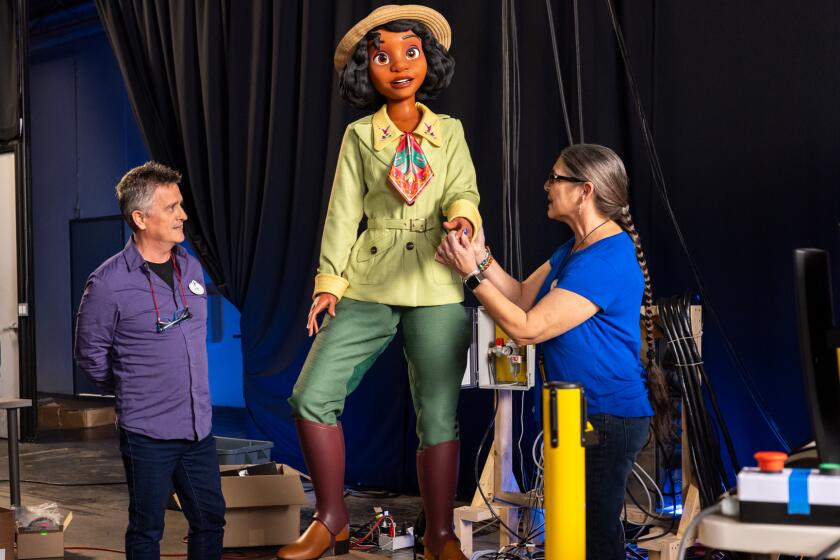Why a ‘Dark Phoenix’ movie could never do the beloved ‘X-Men’ story line justice
“Hear me, X-Men! No longer am I the woman you knew! I am fire! And life incarnate! Now and forever I am Phoenix!”
These are the words Jean Grey says when she first bursts onto the page as Phoenix in “X-Men” No. 101 (1976) after sacrificing herself to pilot a spaceship through cosmic radiation to get her friends safely back to Earth.
She makes the same declaration on the last page of “X-Men” No. 134 (1980) when she rises as Dark Phoenix shortly before destroying the aircraft she and her friends were aboard.
A story that spans that many comic book issues is nearly impossible to tell in a single movie, but that hasn’t stopped Hollywood from trying … twice. The latest effort is “Dark Phoenix,” which hit theaters Friday and promptly scored the lowest opening weekend gross in “X-Men” franchise history.
While this adaptation features more elements from the comics than 2006’s “X-Men: The Last Stand,” neither did the original story justice.
RELATED: With ‘Dark Phoenix,’ ‘X-Men’ architect Simon Kinberg knew he was making a grand finale »
The arc that has come to be known as “The Dark Phoenix Saga,” by Chris Claremont and John Byrne, spans “X-Men” Nos. 129-138. The first half of the story pits the X-Men against the Inner Circle — leaders of a group called the Hellfire Club — who seek to manipulate the powerful Phoenix for their own agenda.
Through a disgusting violation of Jean’s mind and body, Jason Wyngarde, a.k.a. Mastermind, taps into Phoenix’s dark side to gradually transform her into the Black Queen of the Inner Circle and pits her against the X-Men. Unfortunately for Mastermind, he underestimates Phoenix’s power and she unleashes her full force to destroy his mind.
Addicted to the thrill of using this power, Dark Phoenix is born and the story turns to the cosmos.
That said, Dark Phoenix’s destructive reign lasts just two issues before Professor X uses his mental powers to build a network of “psionic circuit breakers” to bind the Force inside Jean’s mind. But this was only after Dark Phoenix already terrorized Jean’s friends and family, casually committed cosmic genocide when devouring a star and destroyed an alien fleet that tried to challenge her.
“The Dark Phoenix Saga” ends with Jean realizing that as long as Phoenix is within her, becoming Dark Phoenix is inevitable. So she uses Phoenix’s power to save the universe from herself.
“All beings carry a capacity for good and evil … Our reason … gives us the responsibility of choosing between them,” says the Watcher, at the end of “X-Men” No. 137. “Jean Grey could have lived to become a god. But it was more important to her that she die… a human.”
But the tragedy of “The Dark Phoenix Saga” — the weight of Jean’s sacrifice — relies on all of Jean’s story that comes between the first time she declares herself Phoenix and her demise.
After dying to rescue her friends by piloting a shuttle through cosmic radiation, Jean is immediately reborn with new cosmic powers.
Phoenix’s powers turn Jean from one of the weakest (and fairly minor) members of the X-Men into the most powerful being. During Claremont, Dave Cockrum and Byrne’s “Phoenix Saga” (“X-Men” Nos. 101-08), Jean as Phoenix wields her powers to save the universe from an armageddon initiated by the ruler of a huge space empire.
The “Phoenix Saga” and “The Dark Phoenix Saga” are two parts of the same story. The nuance of showing Jean become Earth’s greatest hero, have some struggles and then fully embrace being a villain as Dark Phoenix is what made the original comic book story line so remarkable.
“Dark Phoenix” — a direct follow-up to the re-introduction of Jean Grey in “X-Men: Apocalypse,” in which she’s played by “Game of Thrones” actress Sophie Turner — is unable to truly capture that evolution.
“The Last Stand” at least had two prior films featuring Famke Janssen’s Jean Grey as a more central part of the X-team. But the Phoenix arc was still shortchanged by becoming one of several story lines in a single film. And neither attempt bothered to dig into Jean’s transformation into Phoenix before she goes all dark.
It’s why the best adaptation of “The Dark Phoenix Saga” is still the one done by “X-Men: The Animated Series.” The ’90s cartoon spent five episodes to tell the “Phoenix Saga” before tackling the “Dark Phoenix Saga” in a four-part arc a few episodes later.
In the animated “X-Men,” Jean was understood to be powerful but she didn’t always stand out against Rogue’s displays of raw power and Storm’s regal elemental might. The events of Jean acquiring her new powers, her struggles and her turn to the dark side were shown in episodes that were fairly faithful to the comics with one big change — the animated “Dark Phoenix Saga” had a more kid-friendly ending.
But copying the plot points isn’t what’s important for telling a convincing “Dark Phoenix” story.
Taking the time to establish Jean/Phoenix as an unstoppable hero to root for, then turning her into an unstoppable villain to channel the complexities of the original story is what any “Dark Phoenix” adaptation needs to be successful.
Perhaps, with the X-Men now under the control of Marvel Studios following the recent Disney-Fox merger, Kevin Feige will figure out a way to do the story justice. Maybe as its own Disney+ limited series, or a multi-film arc in the Marvel Cinematic Universe.
Until then, any effort is likely to go down in flames.
Twitter: @tracycbrown
More to Read
The biggest entertainment stories
Get our big stories about Hollywood, film, television, music, arts, culture and more right in your inbox as soon as they publish.
You may occasionally receive promotional content from the Los Angeles Times.







